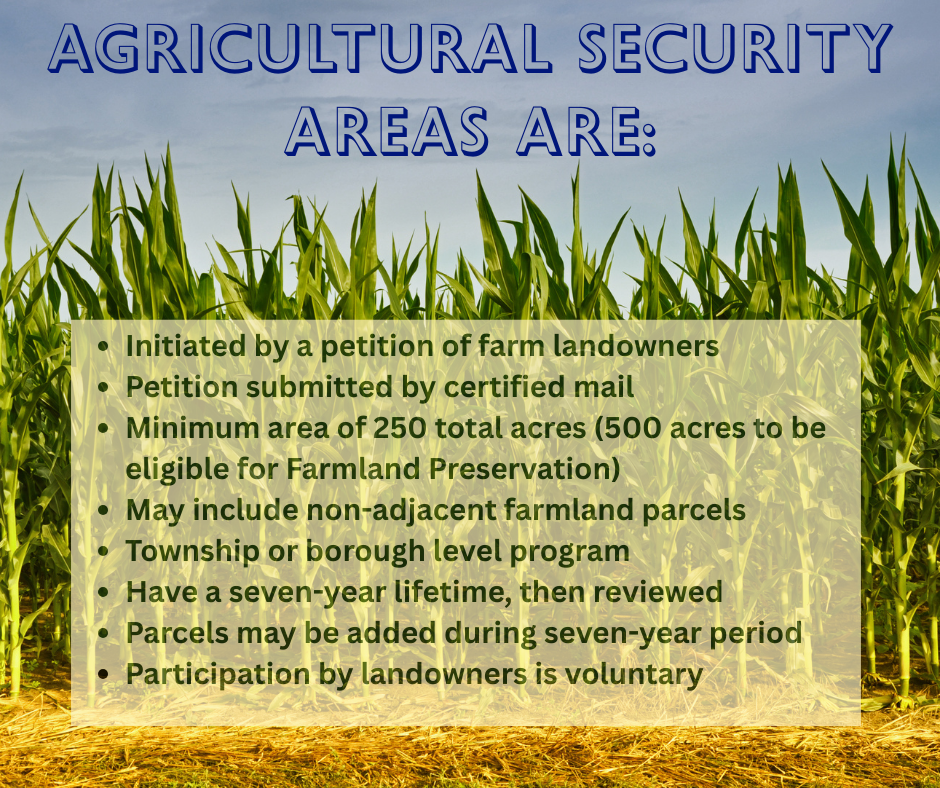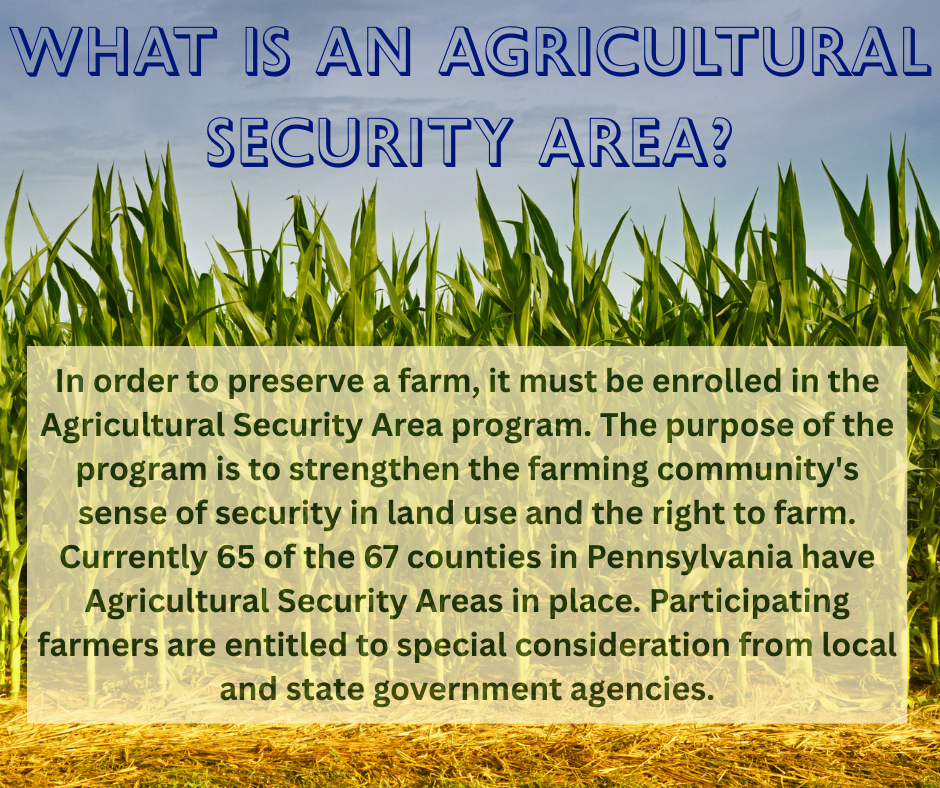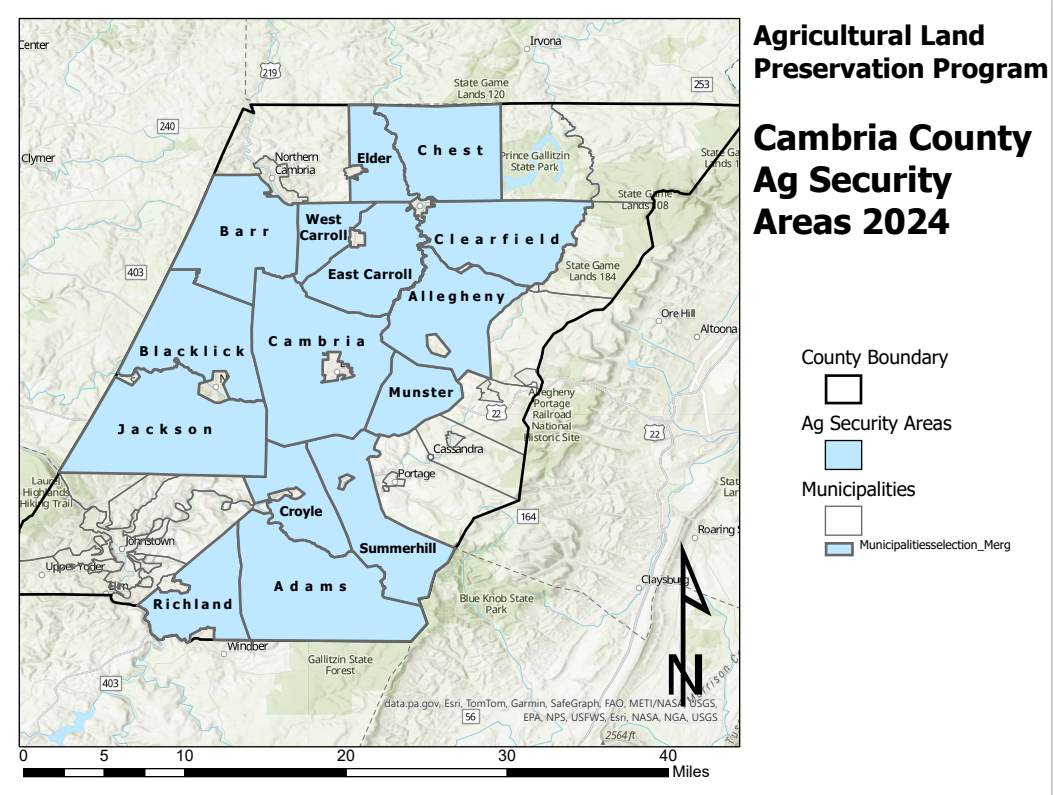Preservation & Security
Dan Carney’s farm became the first farm in Cambria County to be preserved in 2000…
Since then, 25 farms (total) in the county have been preserved. But what does that really mean? It is the purpose of the Farmland Preservation Program is to protect viable agricultural lands by acquiring agricultural conservation easements which prevent the development or improvement of the land for any purpose other than agricultural production.
This program serves to:
Encourage landowners to make a long‑term commitment to agriculture by offering them financial incentives and security of land use.
Assure conservation of viable agricultural lands in order to protect the agricultural economy of this Commonwealth.
Maximize agricultural easement purchase funds and protect the investment of taxpayers in agricultural conservation easements.
In Cambria County approximately 3,776 acres have been preserved on 25 farms. Easement purchase prices have averaged between $800 to $1400 per acre
Reasons why farmland should be preserved:
According to the American Farmland Trust, the U.S. is losing two acres of farmland every minute.
Cambria County’s #1 industry is Agriculture
Cambria County is generally the largest producer of potatoes and oats in Pennsylvania
Provides wildlife habitat, recharges groundwater, and slows stormwater runoff
Ensures that high quality farmland will remain intact for future generations
Buying locally produced food is economical and environmentally friendly
Keeps property taxes low-for every dollar a farm family pays only 33 cents worth of government services are used
Adds to aesthetic appeal and increases scenic visitors


















